For Springs-born artist Bambo Sibiya, society without art is like a body without a soul. "During my early career, I was dealing with my own struggles, and making art helped me to make sense of things," he says. But the power of art goes far beyond personal restoration.
Sibiya's solo exhibition Ngemva Kokuqubuka (After Precarity) at Everard Read's Circa Gallery (until Sat, Jul 27) marks his first show on home soil in seven years. It envisions a world restored, foregrounding agency, cultural pride, self-expression, and empowerment in relation to the black South African experience. As Sibiya rightly points out, "The time is right every single day to be proud of our heritage and culture."
Sibiya's work moves beyond conventional representations of black and femme subjects, deliberately countering narratives of poverty and struggle. Instead, his figures are marked by their beauty, dignity, and strength. The pivotal role Sibiya's mother has played in his life informs this direction; his distinctive portraits are inspired by her oceanic power, and celebrate the wider community of women in this country who work tirelessly to support their families.
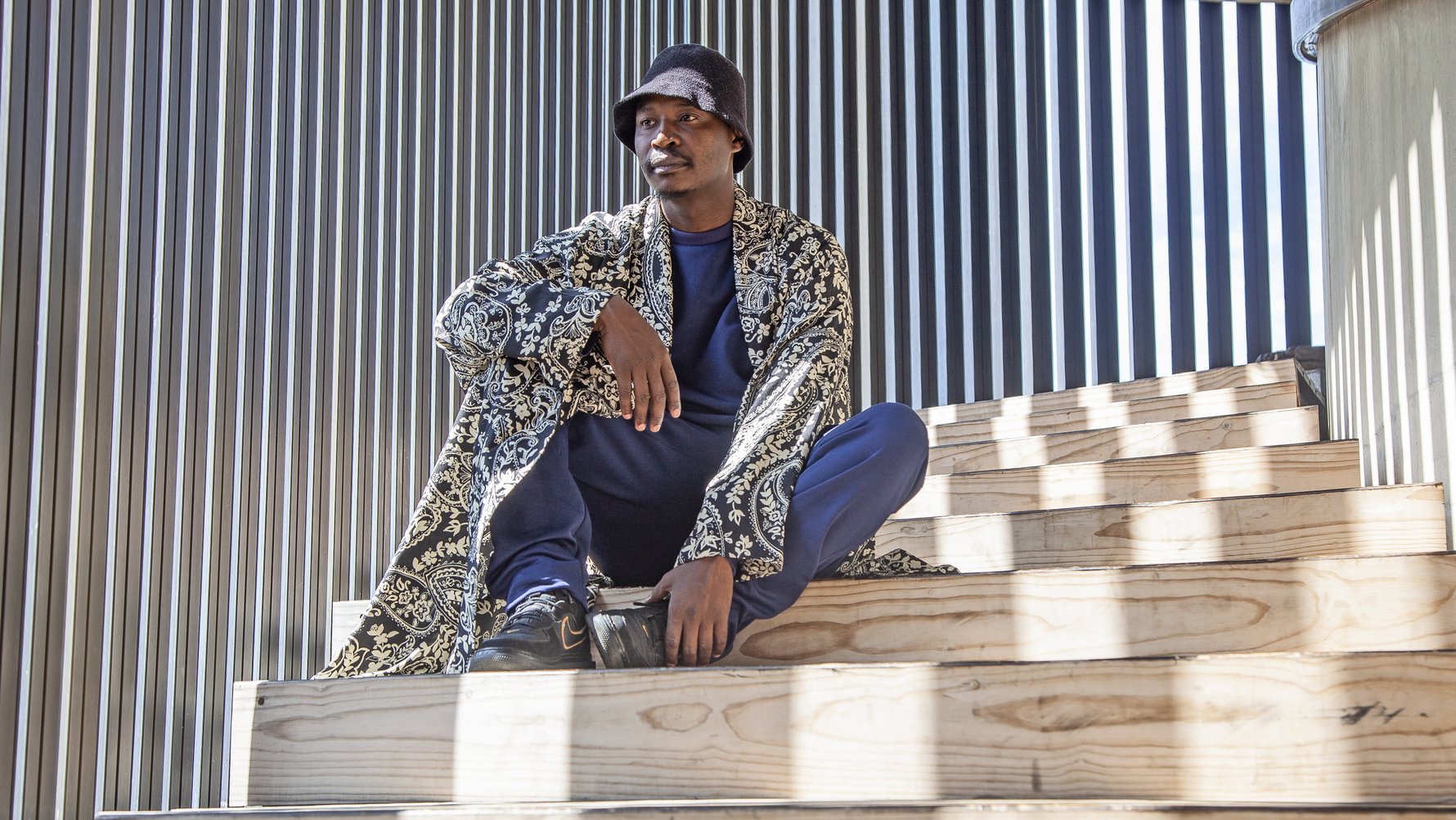
Sibiya studied printmaking at Artist Proof Studio and was the recipient of the Absa L'Atelier Gerald Sekoto Award in 2012. His work has been exhibited locally and internationally, from Abu Dhabi to New York, and belongs to global collections. We caught up with him to hear more about his evolving practice, choosing joy, iconic Joburg artists, and embracing all the city has to offer.
"Luxury was out of reach for me when I was growing up, but what we had – and continue to have – is the wealth of our culture, and that’s what needs to be celebrated more often."
What makes Joburg the place you choose to call home?
Joburg is synonymous with a real sense of freedom. When I arrived here as a young student in 2007, it was the first time I was exposed to a far wider range of cultures – and it struck me then that each culture was given the freedom and space to be whoever they wished to be and to express themselves openly. I could join in and fit in without a problem. There is a level of tolerance and openness amongst people that is rare – and that made it feel like home from the very beginning.
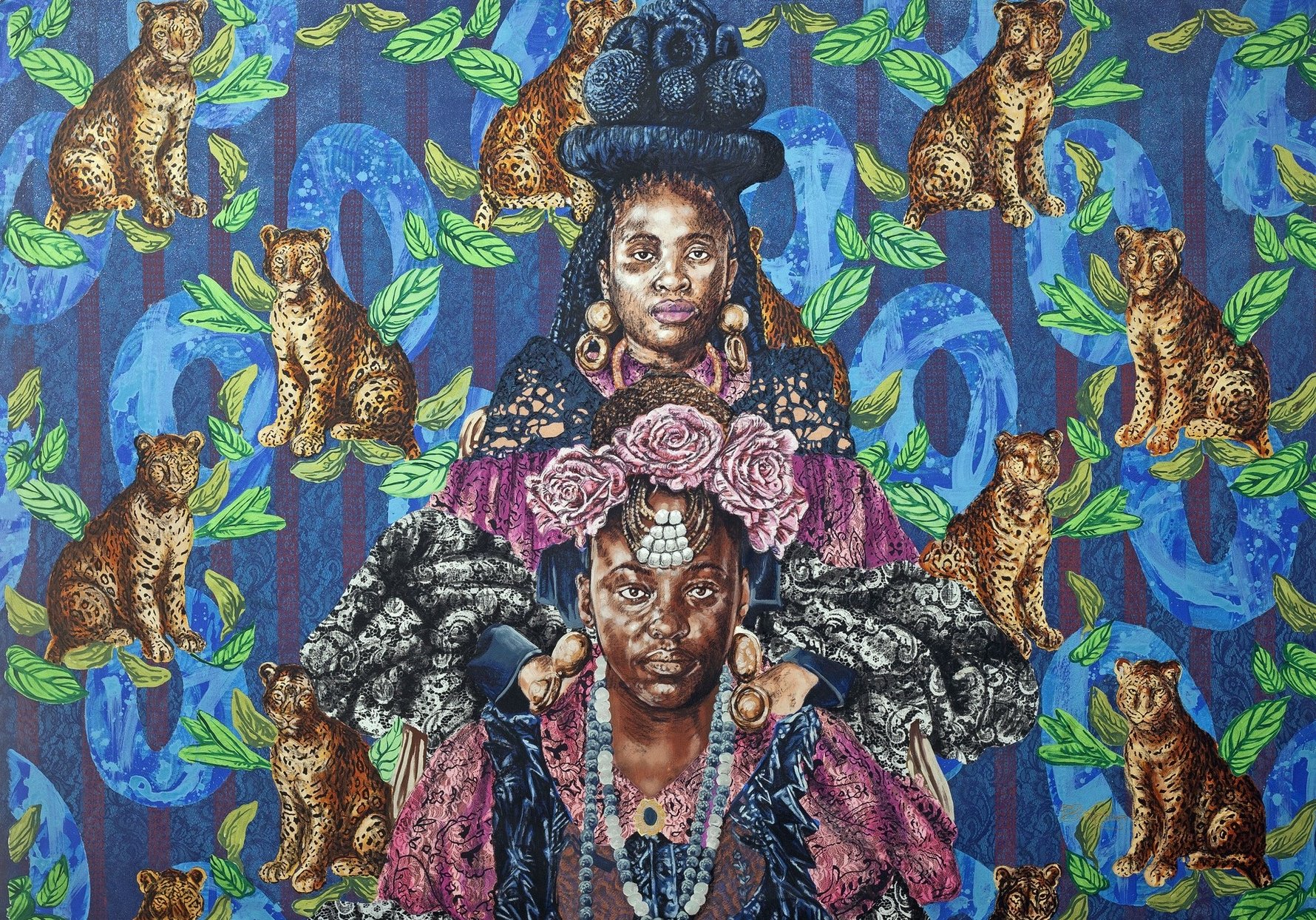
Ngemva Kokuqubuka (After Precarity) marks your first solo exhibition on home soil in seven years. Why is the time for this ripe now?
After seven years of making artwork for international collectors, it felt important to bring the message home to the people who need to hear it, to the women who are celebrated in my work. That said, the time is not necessarily ripe right now, because the time is right every single day to be proud of our heritage and culture. Every day is the right time – not only to celebrate my own mother’s role in my life but also to acknowledge all the women in our communities who work tirelessly around the clock to look after their families.
Can you trace how your art and thinking have evolved since your last major show in South Africa?
It’s an exciting question because the way I am currently producing my work is totally different from my earlier career. I used to source existing clothes, wallpapers, and any other items that I could draw inspiration from. For the current body of work, I took full ownership of what is on the board – everything is original and nothing is borrowed or collected. The work has become a theatrical performance, it is staged. Everything was designed from scratch.
I also made a conscious decision to challenge myself, to show how my art has evolved over the years and how my range of skills has developed. I use a number of techniques in one artwork – lino, dry point etchings, as well as painting, and charcoal drawing – to bring the image to full-bodied life. I’ve expanded my portfolio beyond the canvas by designing the dresses you see on the models, creating my own wallpapers, and even making the hairpieces – which, in the next iteration of this exhibition, will be translated into sculpture. Three-dimensional work is a new area of exploration altogether.
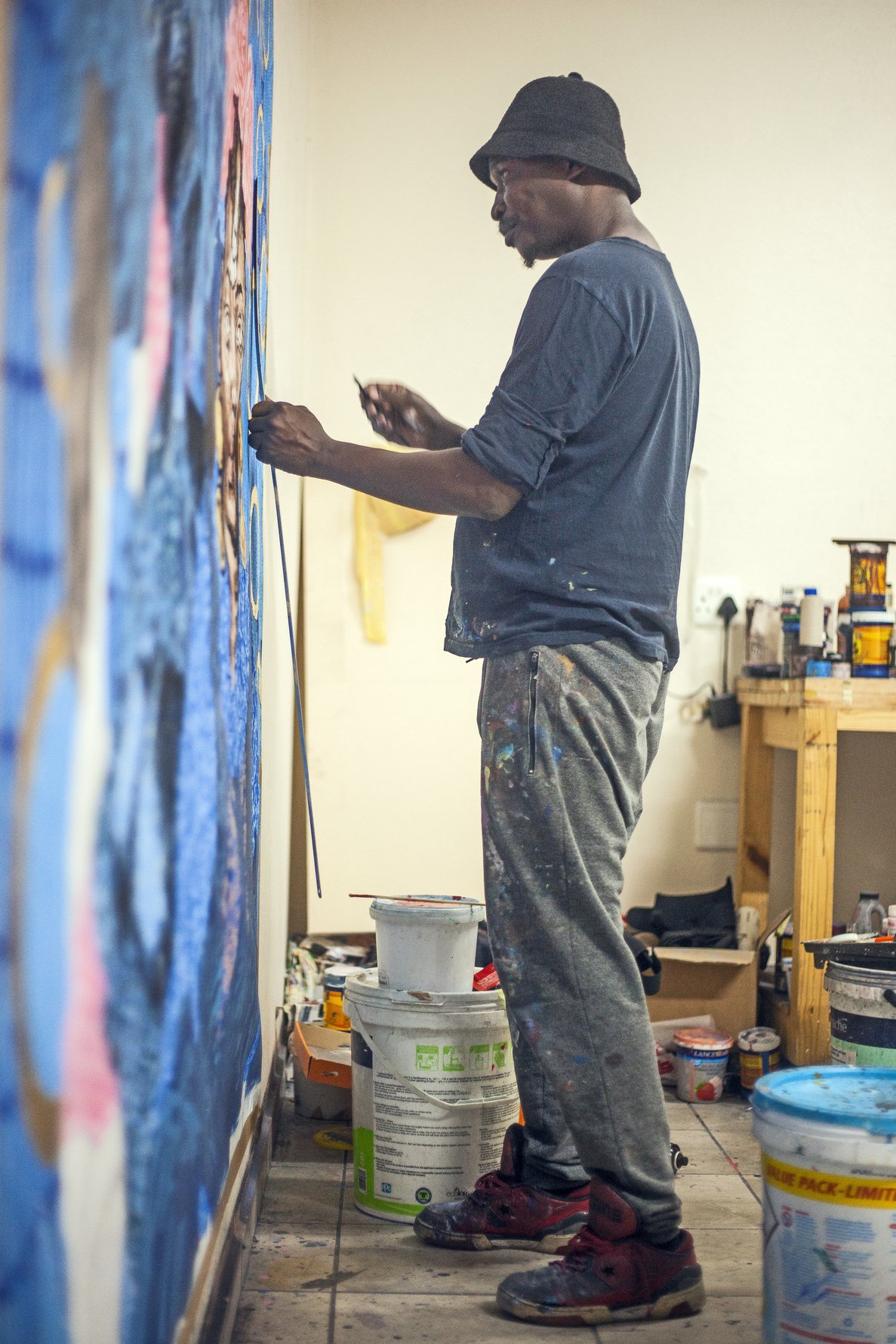
In a country with complex social issues like ours, black communities are sometimes framed within a context of poverty and struggle. You counter this with a celebratory and empowering stance. What makes a joyful rather than a more critical approach particularly impactful?
I love the empowerment part of your question. I have a soccer team and one thing I teach them is that when you watch a show like Top Billing on television, everything is about fancy food and fashion, which is so out of reach because we are not exposed to things like this in townships. So my message to the team is that it’s not the fancy Smeg stove that makes the food. You can cook on a wooden or two-plate stove, all you need are the right ingredients and an understanding of the recipe. That’s empowerment.
Luxury was out of reach for me when I was growing up, but what we had – and continue to have – is the wealth of our culture, and that’s what needs to be celebrated more often, rather than allowing preconceived ideas of poverty and suffering to dominate at every turn. My exhibition doesn't shy away from depicting the poverty and struggle of the black experience, but it does so by prioritising agency and empowerment. Rather than reinforcing tropes of victimhood and hardship, I’m inviting viewers to engage with the subjects on their own terms, celebrating their individual stories and highlighting their inherent power and resilience. This shift in perspective is not only an aesthetic choice. By focusing on black joy and self-determination, I am challenging the dominant narratives that have historically marginalised and dehumanised black communities.
"Art is not only about resistance and challenging politics – it’s also about discovery, self-expression, and love."
While you've always afforded them great dignity, the figures in your work have become more opulent and regal through the years. What underpins this development?
How do you depict a bold and courageous woman? How do you celebrate their abundant love? How do you tell the story of the enormous respect and appreciation you have of a mother who works all day for another family and then comes home to do the same for her own? I’ve dressed these women in bales of big, bold fabric, with layers of lace, pleats, and texture so they look royal and regal – because that’s what their tireless work and endless resilience deserve. This is everything that my own mother stands for, and she inspires so much of my work. The paintings have also become bigger, and more monumental, while the predominance of blue – which is often a royal blue – is also a reference to my mother. I associate her with the power of the ocean.
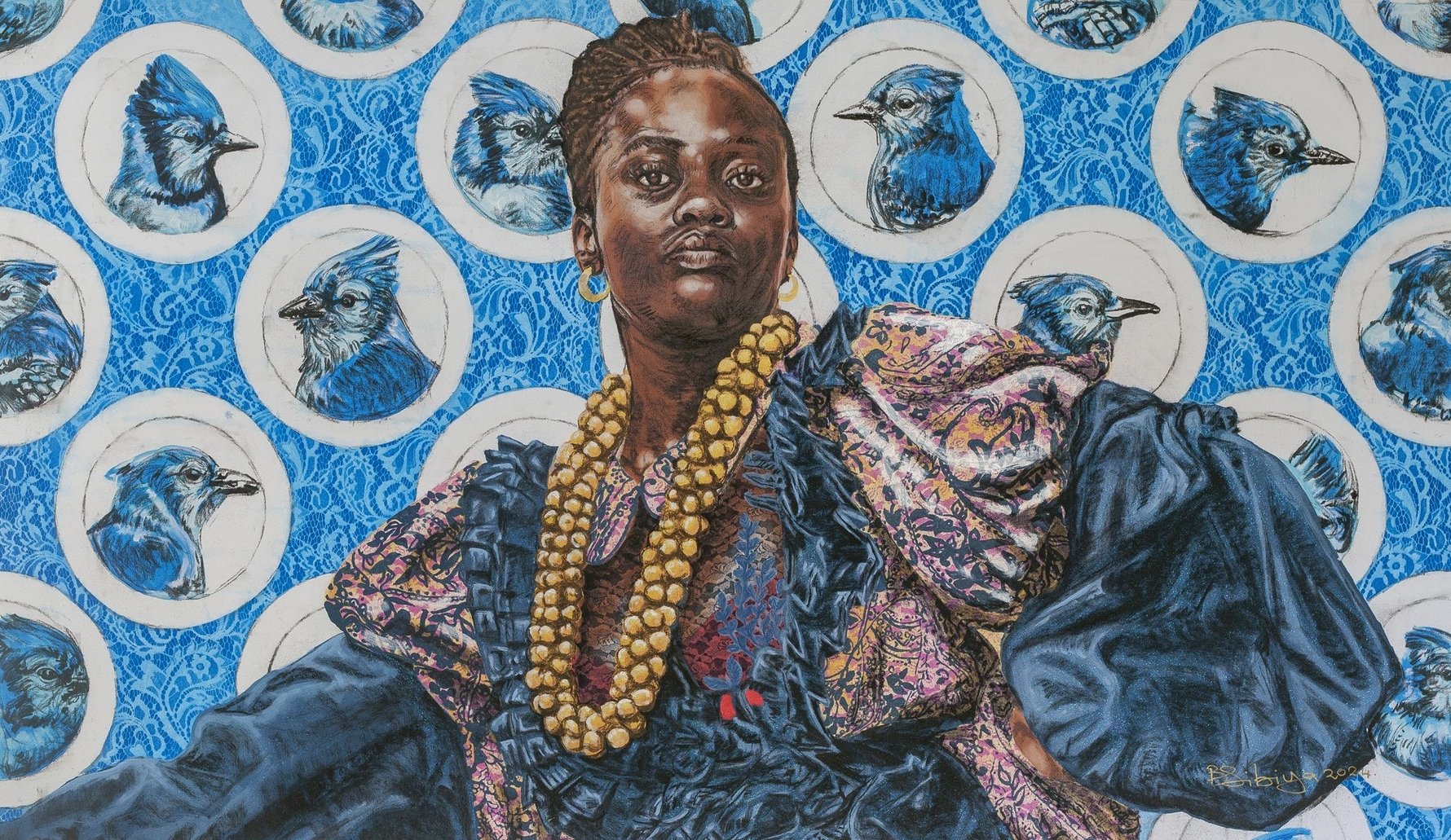
How do you understand the role of art and artists in society?
Artists are able to address issues that people are too afraid to talk about. Art gives us the licence to reach places where people can’t go. In that way, we can also help to heal. After Precarity offers something redemptive, restorative, and joyous to contemplate. Art is not only about resistance and challenging politics – it’s also about discovery, self-expression, and love. During my early career, I was dealing with my own struggles, and making art helped make sense of things. The process of making art can be restorative at a personal level too. Ultimately, a society without art is like a body without a soul. This includes all forms of art – music, fashion, dance – because it imbues a culture with its identity and personality.
Your work draws on subcultures from music, dance, and fashion. Can you share more about these influences?
When I worked on my portfolio of men in the mining industry, I did research on migrant labourers who left their homes behind to find work in the city and inevitably, that was usually on the mines. My question was, “What kept these men going, so far away from their homes and families?” The answer lies in the creative strength of the subcultures like music, dance, fashion, and art. I decided to focus on these subcultures because that’s what kept these men going – and continues to do so. As a youngster, I used to listen to music like [South African jazz singer] Letta Mbulu so that I could dance. As an adult, I realise I have been dancing to social issues all my life!
How was your time at Artist Proof Studios (APS) formative to who you are as an artist?
I’m so fortunate to have been at APS – my experience fundamentally altered how I regard art. Without a doubt, APS is one of the best institutions to produce artists who go on to practice. Many outstanding institutions also produce writers, critics, and curators, but APS champions artists who are creating art. During my time alone, APS produced artists like Nelson Makamo, Phillemon Hlungwani, and Themba Khumalo – and they are all synonymous with the Joburg art scene. The competitive spirit within the institution also helps to build an artist, to make you that much more robust. That’s an important quality to have if you plan to make a career out of art.
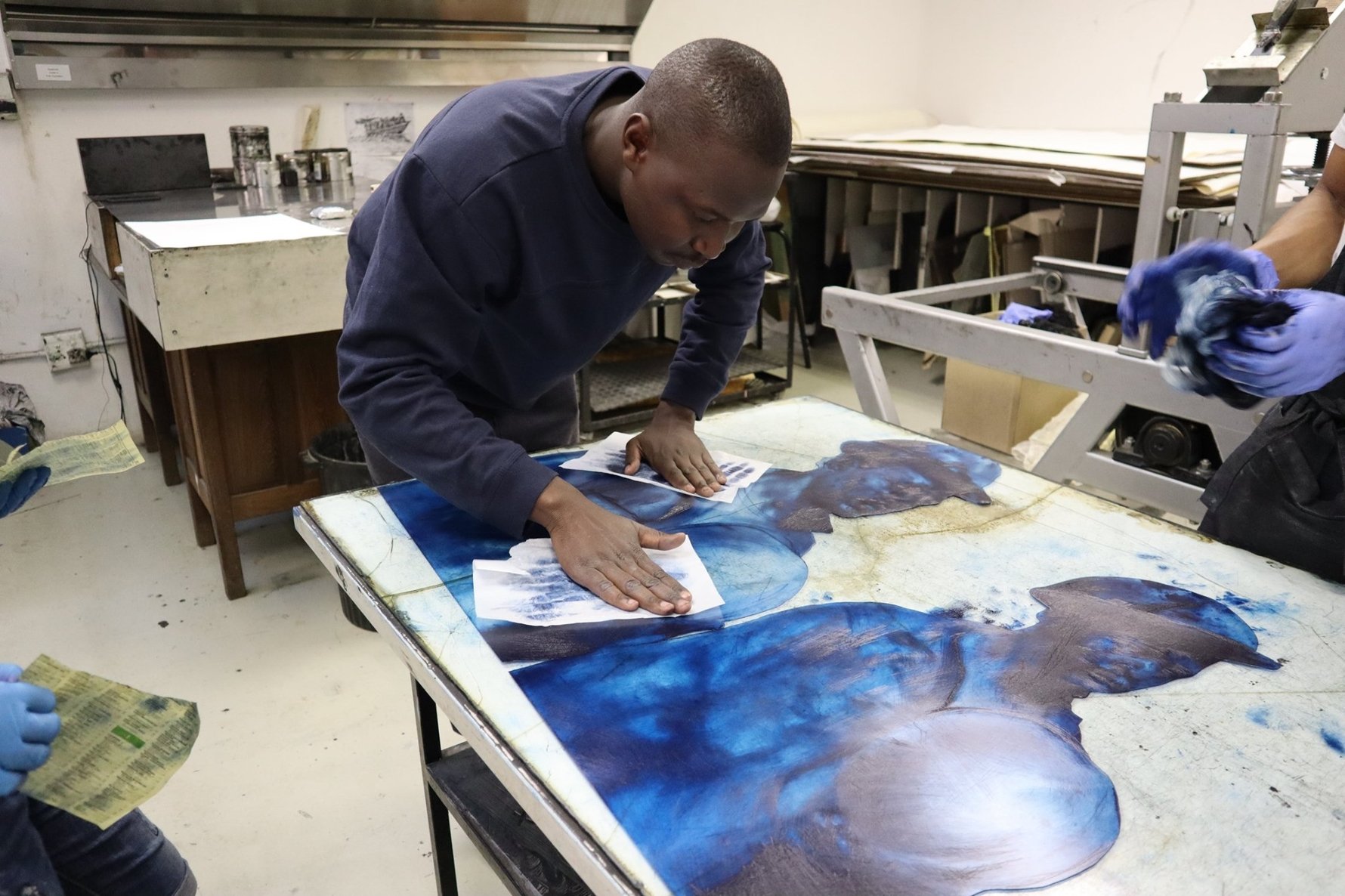
Nowadays you work in Bryanston. How has this change in environment showed up in your practice?
The change had more to do with ease and accessibility – being in a place where people can drop in and move freely at any time of the day to visit my studio. I wanted to be in an area where my practice can flourish, where my family is safe, and can attend good schools in the area, because my studio is also my family home, and my children are an integral part of my studio life.
"Joburg is misunderstood – it is teeming with beauty and creative energy. The abundance of culture brings the concrete structures to vivid life."
What is a surprising thing people might learn about Joburg by having a conversation with you?
Joburg is misunderstood – it is teeming with beauty and creative energy. The abundance of culture brings the concrete structures to vivid life. From Newtown hippies who dress wildly as a way to express themselves to the Market Theatre complex, where on any given day you can find celebrated artists chilling outside having a smoke, to world-class artists from The Dance Factory moving about freely in public spaces – there is so much a visitor can be exposed to.
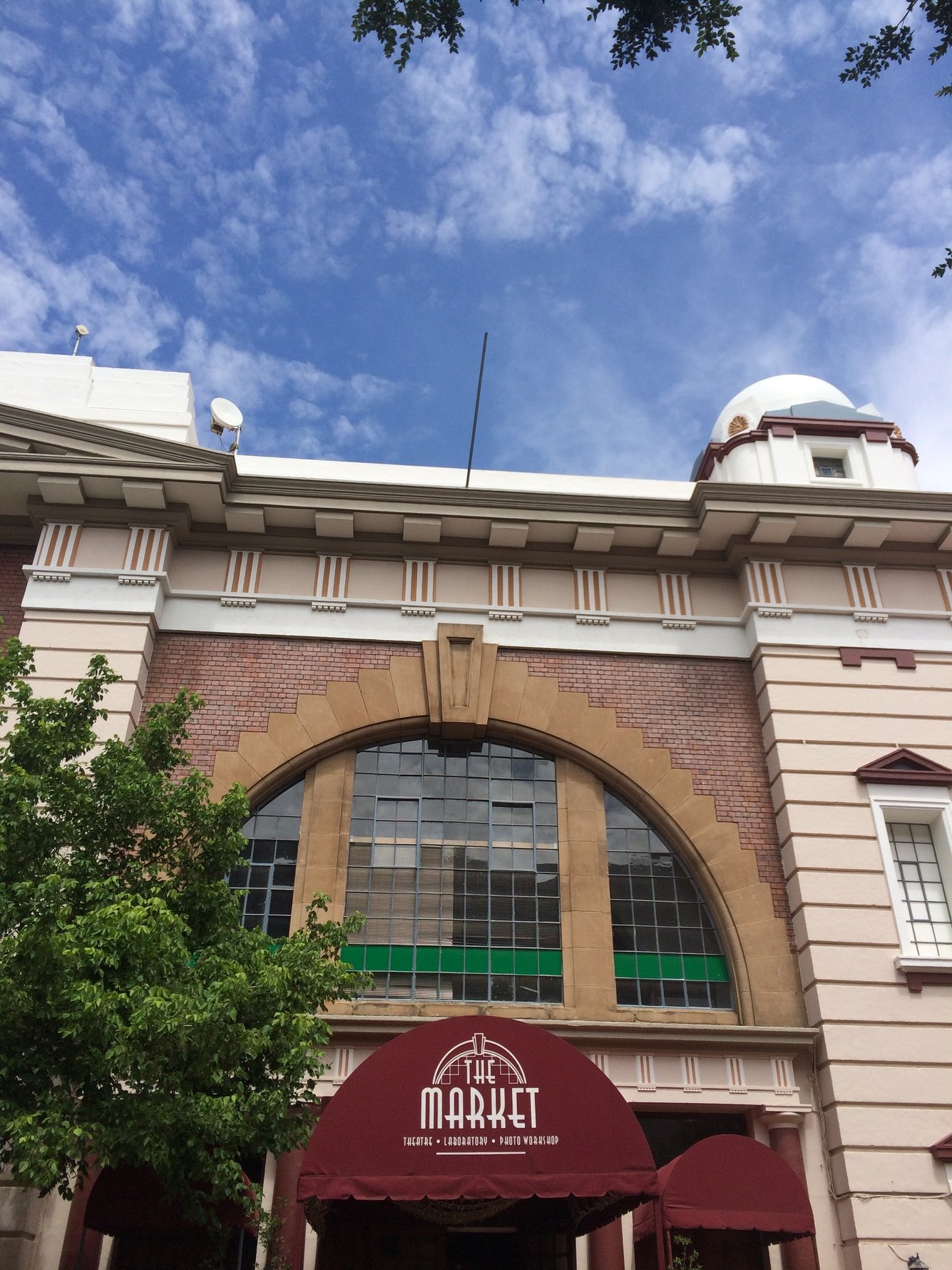
Most iconic Joburg artist or artwork?
It’s not just one! Diane Victor showed me everything. I’m a figurative artist, and she changed my entire perspective on figure drawing. The way she captures the movement and expressive tension in hands and feet is like nothing else I’ve ever seen. Sam Nhlengethwa is iconic. We come from the same township and he opened up a world of possibilities for me.
Then there is Paul Molete, who taught at APS at one point. I’ve never seen anyone who cuts linocut so beautifully. His work makes me recall Mrs Hayes, my graphic design teacher at Benoni Technical College, who told us that people buy with their eyes. Paul used to package his social issues so beautifully that you bought into the beauty first and only then realised that the work addressed a critical social issue like abortion. Of course, Nelson Makamo is iconic – he knows just when to stop, how to compose, and choose colours.
Your favourite Joburg author or favourite Joburg book?
I’m going to pass on this one because my answer would get me into trouble! I have so many friends who are good writers it would be impossible to choose one favourite.
Your favourite Joburg suburb, and why you choose it?
I love Forest Town because it’s the bridge to varied and wonderful surroundings. The Joburg Zoo, the Four Seasons Hotel The Westcliff with its magnificent views, and Parktown down the road. It’s a beautiful tree-filled suburb that sits at the centre of so much.
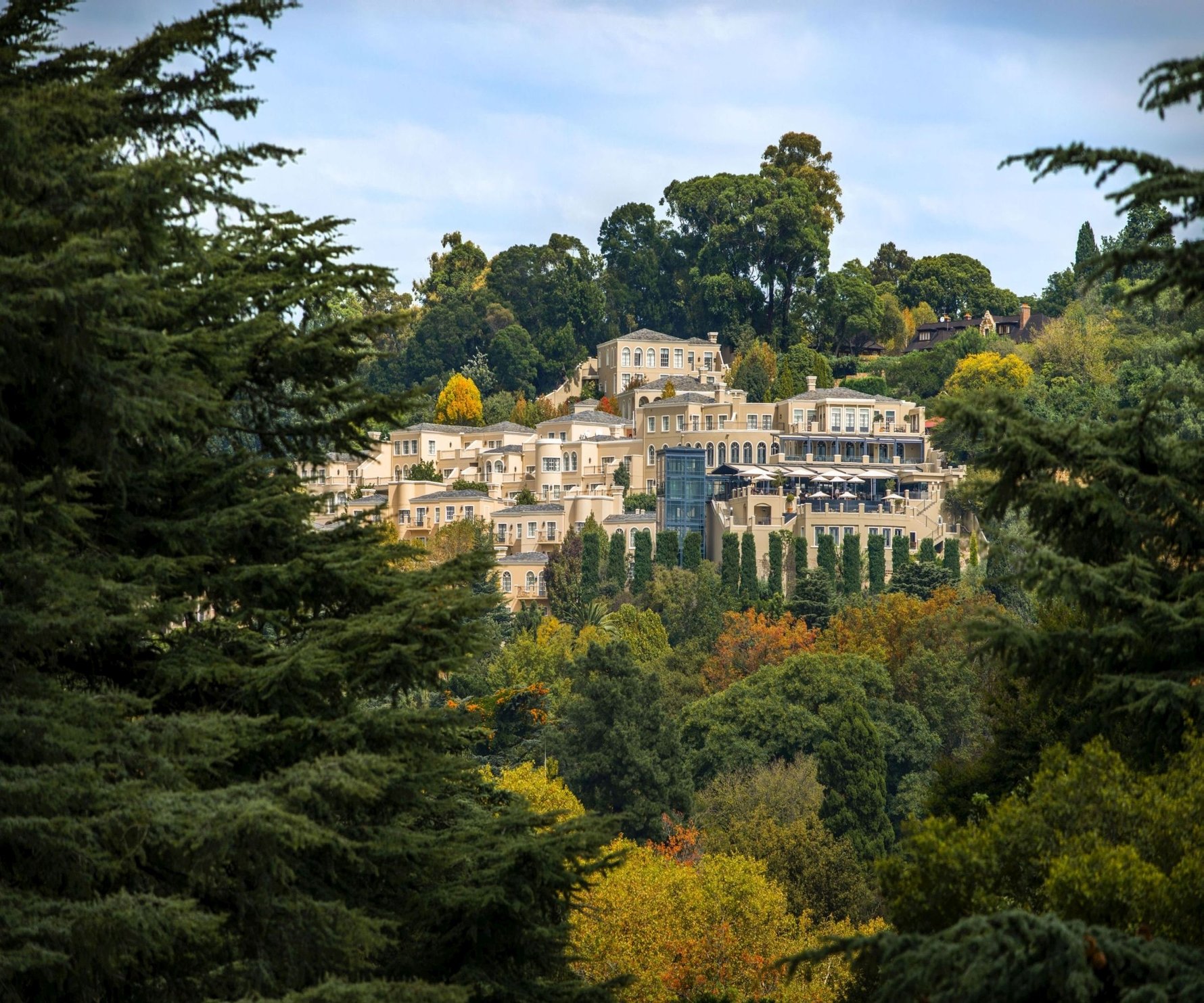
What three things should a visitor not leave Joburg without seeing or experiencing?
My exhibition Ngemva Kokuqubuka (After Precarity) at Circa – of course! Having a meal at Maboneng’s Mama Mexicana. Dropping into Linbro Park Studios to see two artists, Lazyhound and Themba Khumalo.
One song on your Joburg soundtrack that either is about Joburg or makes you think about this city?
I'm hard-pressed to choose between Stimela SaseZola by Mbongeni Ngema and Sipho Hotstix Mabusa’s Burn Out – both embody the spirit of Joburg.
The most memorable meal you have eaten in Joburg?
At Mastrantonio in Illovo. It might not be a steakhouse but it serves the best medium-rare sirloin ever!
If you were the Joburg mayor for one day (average tenure) what would you change?
There is no question that I’d orchestrate a massive 24-hour clean-up. It would be a game-changer and we’d be able to see some of the beautiful architecture hidden behind the plastic.
"There’s no pretence in Joburg, and life is not a rehearsal."
If you could buy one Joburg building which would it be?
August House. From making perfumes to having hosted artists like Mary Sibande, Kudzanai Chiurai, and Mbongeni Buthelezi, it holds a rich history of the city. [August House was the original home of African Sales, a French perfume and fashion empire started by the Priebatsch family].
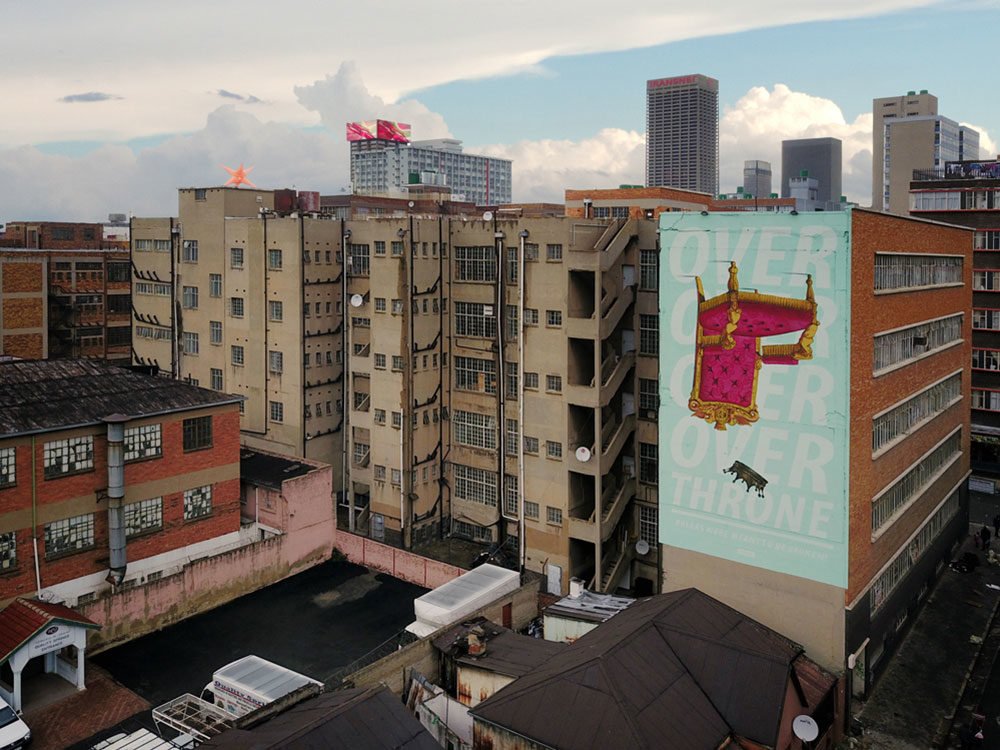
What's your favourite place to see art in the city, and why?
Jan Smuts Avenue – there are so many galleries all within walking distance.
What makes someone a Joburger?
The funky way they dress up!
What do you love most about Joburg?
The people of Joburg are so warm, and when you bump into significant movers and shakers, you can interact with them like normal, everyday people. There’s no pretence, and life is not a rehearsal.
What do you least like about Joburg?
Crime.
Your number-one tip for a first-time visitor to Joburg?
Don’t be afraid to embrace all that the city has to offer. If you don’t, you’ll miss out on the essence of the city. But do so with caution; know where to go and at what time – just be sensible.
One Joburg personality whom you would honour with the freedom of the city if you could, and why?
Sam Nhlengethwa. He has paved the city for us.
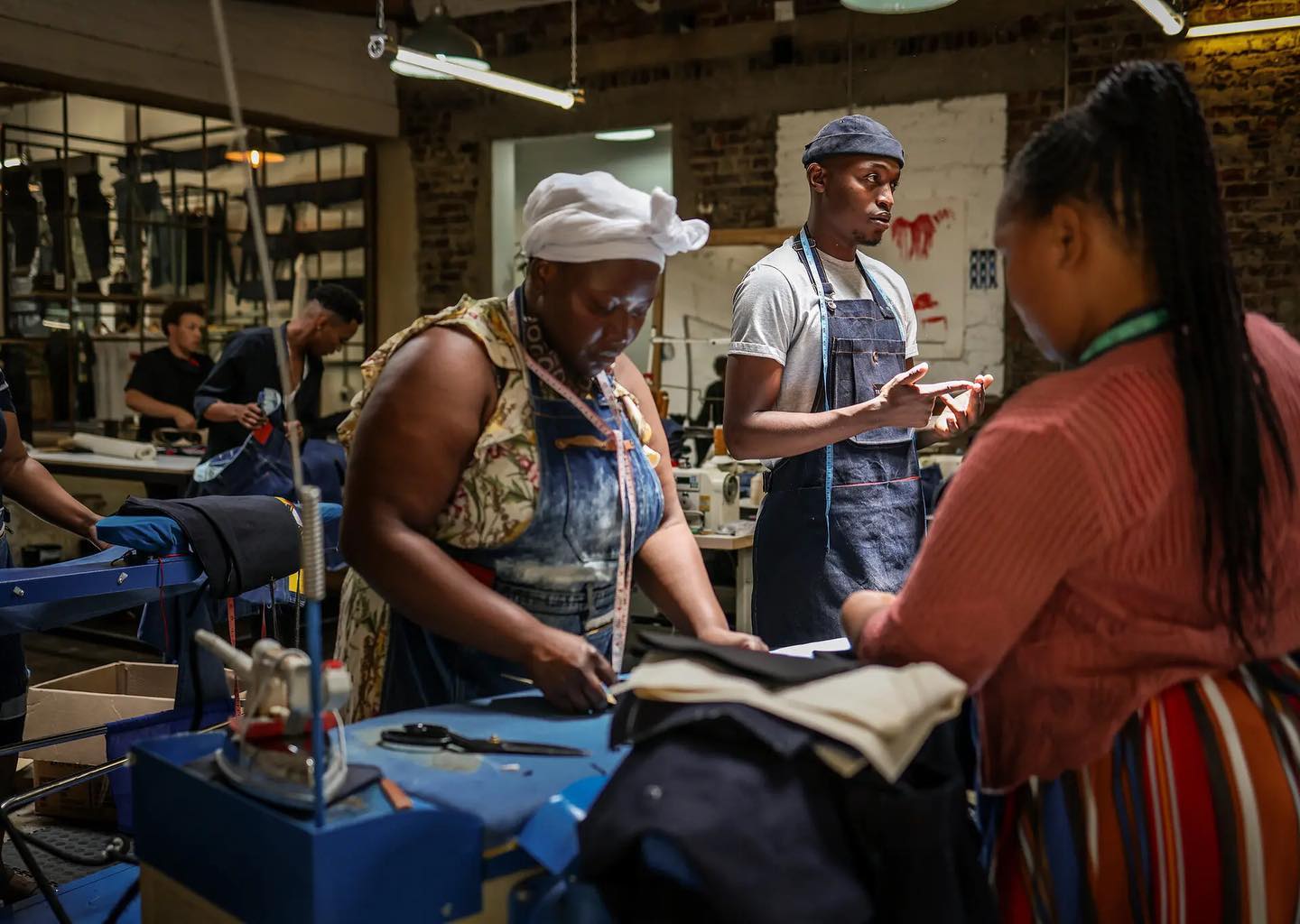
The perfect weekend in Joburg includes...
A market and a visit to the studios of Blessing Ngobeni and Tshepo Jeans at Victoria Yards.
Three words that describe this city.
Vibrant, diverse, and dynamic.
Check out some of our previous #MyJoburg interviews for more insights into the city:
#MyJoburg with Zydia Botes, textile designer and entrepreneur
#MyJoburg with David Mann, writer and arts journalist
#MyJoburg with Nickolaus Bauer, journalist and Dlala Nje co-founder


_m.jpg)
' at Everard Read Circa Gallery - Ph Supplied (2)-1_m.jpg)
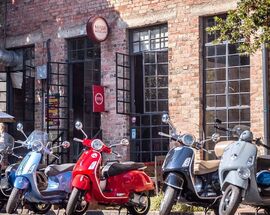


Comments